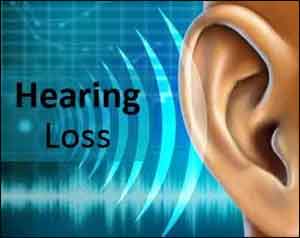- Home
- Editorial
- News
- Practice Guidelines
- Anesthesiology Guidelines
- Cancer Guidelines
- Cardiac Sciences Guidelines
- Critical Care Guidelines
- Dentistry Guidelines
- Dermatology Guidelines
- Diabetes and Endo Guidelines
- Diagnostics Guidelines
- ENT Guidelines
- Featured Practice Guidelines
- Gastroenterology Guidelines
- Geriatrics Guidelines
- Medicine Guidelines
- Nephrology Guidelines
- Neurosciences Guidelines
- Obs and Gynae Guidelines
- Ophthalmology Guidelines
- Orthopaedics Guidelines
- Paediatrics Guidelines
- Psychiatry Guidelines
- Pulmonology Guidelines
- Radiology Guidelines
- Surgery Guidelines
- Urology Guidelines
Music through headphones linked to hearing loss in kids

Children who listen to music through headphones are at higher risk of high-frequency hearing loss(HFHL), according to a study published in the journal JAMA Otolaryngology-Head & Neck Surgery.
The Dutch study suggests that noise-related hearing loss (HFHL) may be detectable in children aged 9-11 years due to use of Portable music player (PMP). Regardless of the duration of the use of headphones or the volume set up, children who used portable music players just one or two days a week were more than twice as likely to have hearing loss as children who didn’t use the devices at all.
Carlijn M.P. le Clercq and his associates conducted a cross-sectional study within an ongoing prospective birth cohort study. The study included a total of 5,355 children aged between 9 and 11 years who had their first audiometric evaluation. The final sample included 3,116 children (mean age, 9.7 years). Parental questionnaires were used to assess PMP use and sociodemographic factors. Few questions were asked from parents regarding hearing complaints from their children, how often kids used portable music players and how high they typically set the volume.
Key findings:
- Of 3116 included children, 39.9% reported no device use.
- 14.2% of the cohort had HFHL or audiometric notches; 2.1% had both.
- Odds (ORs) for HFHL with portables use:
- 1-2 days/week: 2.88
- ≥3 days/week: 2.74
- However, time and duration showed no association.
- A small percentage (1.7%) had bilateral impairment.
- Household income was associated with HFHL:
- Low income (OR, 0.61).
- Medium income (OR, 0.72)
- No association of age or sex found.
Read also: Cardiovascular Disease in elderly associated with Hearing Loss
The study concluded that signs of noise-induced hearing loss may already be present in children aged 9 to 11 years old and may be associated with portable music player use prior to exposure to known noise hazards. The authors suggest that repeated measurements are needed to confirm the association of portable music player use with hearing impairment in children.
For more reference log on to
https://jamanetwork.com/journals/jamaotolaryngology/article-abstract/2684510

Disclaimer: This site is primarily intended for healthcare professionals. Any content/information on this website does not replace the advice of medical and/or health professionals and should not be construed as medical/diagnostic advice/endorsement or prescription. Use of this site is subject to our terms of use, privacy policy, advertisement policy. © 2020 Minerva Medical Treatment Pvt Ltd